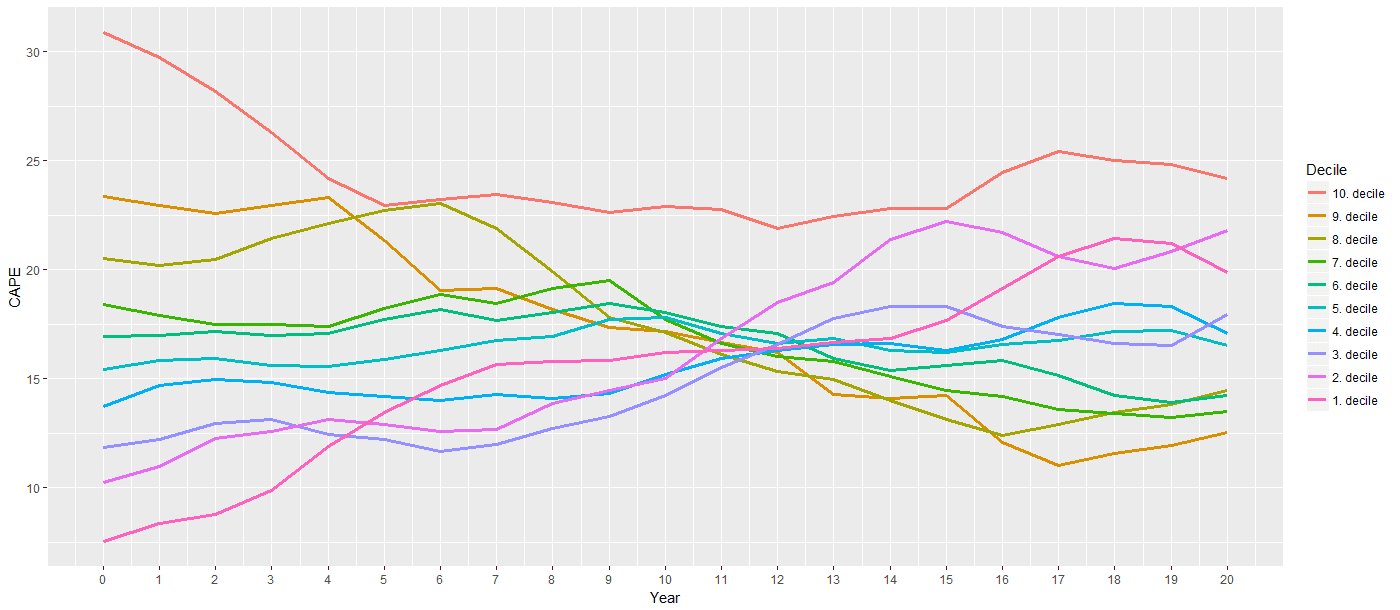Report: Dangerous Climate Whiplash Poses Significant Threat To Global Cities

Table of Contents
Increased Frequency and Intensity of Extreme Weather Events
Climate whiplash, characterized by rapid shifts between extreme weather events, is becoming more frequent and intense due to climate change impacts. This unpredictable nature poses unique challenges for global cities.
Heatwaves and Droughts
Heatwaves are becoming longer, more frequent, and more intense, leading to heat-related illnesses, water shortages, and wildfires in urban areas. The urban heat island effect exacerbates the problem, making cities significantly hotter than surrounding rural areas.
- Examples of cities impacted: Phoenix, Arizona; Athens, Greece; London, England experienced record-breaking heatwaves in recent years, causing widespread health problems and infrastructure strain.
- Health consequences: Heat stroke, heat exhaustion, respiratory illnesses, and increased mortality rates are common consequences.
- Economic impacts: Reduced worker productivity, increased healthcare costs, and damage to infrastructure all contribute to significant economic losses.
- Infrastructure damage: Extreme heat can damage roads, power grids, and other critical infrastructure, causing widespread disruption.
Flooding and Storm Surges
Coastal cities face increasing risks of flooding and storm surges due to rising sea levels and more intense rainfall events. Inland cities are also vulnerable to flash floods caused by extreme precipitation.
- Examples of cities vulnerable to flooding: Venice, Italy; Miami, Florida; Dhaka, Bangladesh are all at high risk from rising sea levels and extreme rainfall.
- Damage to infrastructure: Flooding damages roads, bridges, buildings, and transportation systems, causing massive disruptions and economic losses.
- Displacement of populations: Flooding can force mass evacuations and displacement of residents, leading to humanitarian crises.
- Economic losses: The economic cost of flood damage, including repairs and business interruption, can be devastating.
Unpredictable Weather Patterns
The erratic nature of climate whiplash makes it incredibly challenging to predict and prepare for extreme events. This unpredictability poses significant hurdles for urban planning and resource management.
- Challenges for urban planning: It's difficult to design infrastructure and develop long-term plans when the nature and frequency of extreme weather events are uncertain.
- Difficulty in resource allocation: Predicting resource needs for disaster response and recovery becomes extremely complex in the face of unpredictable climate whiplash.
- Impact on emergency response systems: Emergency services face immense challenges responding effectively to a rapidly changing sequence of extreme weather events.
Impacts on Urban Infrastructure and Services
Dangerous climate whiplash significantly impacts urban infrastructure and essential services, posing serious risks to the well-being of city dwellers.
Damage to Transportation Networks
Extreme weather events frequently disrupt transportation systems, causing significant economic losses and impacting daily life.
- Examples of infrastructure damage: Floods can damage roads and bridges, while heatwaves can cause road buckling and rail track distortion.
- Economic costs: Repairs and disruptions to transportation networks lead to substantial economic costs, impacting businesses and commuters.
- Impact on daily life: Disruptions to transportation systems can severely affect access to work, healthcare, and other essential services.
Water and Energy Security
Urban water and energy systems are highly vulnerable to climate whiplash. Extreme weather events can cause water shortages, power outages, and damage to critical infrastructure.
- Risks of water shortages: Droughts and heatwaves reduce water availability, impacting drinking water supplies and sanitation systems.
- Impacts on public health: Water shortages can lead to waterborne diseases and compromised sanitation. Power outages disrupt healthcare facilities.
- Challenges in ensuring energy resilience: Extreme weather events can damage power plants and distribution networks, leading to widespread outages.
Public Health Risks
Climate whiplash poses significant public health risks, exacerbating existing health inequalities.
- Examples of health impacts: Heat stroke, respiratory illnesses, waterborne diseases, and the spread of vector-borne diseases are all exacerbated by extreme weather.
- Challenges in providing healthcare: Extreme weather events can overwhelm healthcare systems, making it difficult to provide timely and effective care.
- Importance of public health preparedness: Strengthening public health infrastructure and preparedness strategies is crucial to mitigate the impacts of climate whiplash.
Vulnerability of Different Urban Populations
The impacts of dangerous climate whiplash are not felt equally across all urban populations.
Socioeconomic Disparities
Vulnerable populations, including low-income communities and marginalized groups, are disproportionately affected by climate whiplash due to limited resources and access to support.
- Examples of unequal impacts: Low-income communities often live in areas more susceptible to flooding or heatwaves, lacking the resources to adapt.
- Lack of access to resources: Vulnerable populations may lack access to clean water, adequate housing, healthcare, and early warning systems.
- Increased risk of displacement: Climate-related disasters disproportionately displace vulnerable populations, exacerbating existing inequalities.
Urban Density and Planning
Urban density and planning significantly influence a city's vulnerability to climate whiplash.
- Examples of urban planning strategies: Green infrastructure, such as parks and green roofs, can help mitigate the urban heat island effect. Improved drainage systems can reduce flood risk.
- Importance of urban resilience: Investing in resilient infrastructure and implementing sustainable urban planning strategies is crucial to mitigate the impacts of climate whiplash.
Conclusion: Mitigating the Threat of Dangerous Climate Whiplash
Dangerous climate whiplash poses a significant and escalating threat to global cities, impacting infrastructure, services, and disproportionately affecting vulnerable populations. The unpredictable nature of these extreme weather events necessitates a proactive and multifaceted approach to mitigation and adaptation.
Addressing the threat of dangerous climate whiplash requires immediate and concerted action. Cities must prioritize investments in climate-resilient infrastructure, strengthen early warning systems, and implement sustainable urban planning strategies to safeguard their populations and mitigate the devastating impacts of extreme weather events. This includes investing in green infrastructure, improving drainage systems, enhancing building codes, and developing robust emergency response plans. Furthermore, addressing socioeconomic inequalities is crucial to ensuring that all urban residents are protected from the impacts of climate whiplash.
Failing to prepare for the escalating threat of dangerous climate whiplash will have catastrophic consequences. By prioritizing adaptation and mitigation strategies, we can build more resilient cities and safeguard the future of urban populations worldwide. Let's work together to create cities that are better prepared for the challenges of dangerous climate whiplash and build a more sustainable urban future.

Featured Posts
-
 Receta Sencilla De Sopa Aragonesa Sin Cebolla Sin Sobre Lista En 20 Minutos
May 31, 2025
Receta Sencilla De Sopa Aragonesa Sin Cebolla Sin Sobre Lista En 20 Minutos
May 31, 2025 -
 Seattle Weather Soggy Skies Continue Into The Weekend
May 31, 2025
Seattle Weather Soggy Skies Continue Into The Weekend
May 31, 2025 -
 Why Current Stock Market Valuations Arent A Cause For Investor Alarm Bof A
May 31, 2025
Why Current Stock Market Valuations Arent A Cause For Investor Alarm Bof A
May 31, 2025 -
 New Covid Variant Lp 8 1 What You Need To Know
May 31, 2025
New Covid Variant Lp 8 1 What You Need To Know
May 31, 2025 -
 Fox19 Meteorologist Moves To Cleveland For Part Time Role
May 31, 2025
Fox19 Meteorologist Moves To Cleveland For Part Time Role
May 31, 2025
